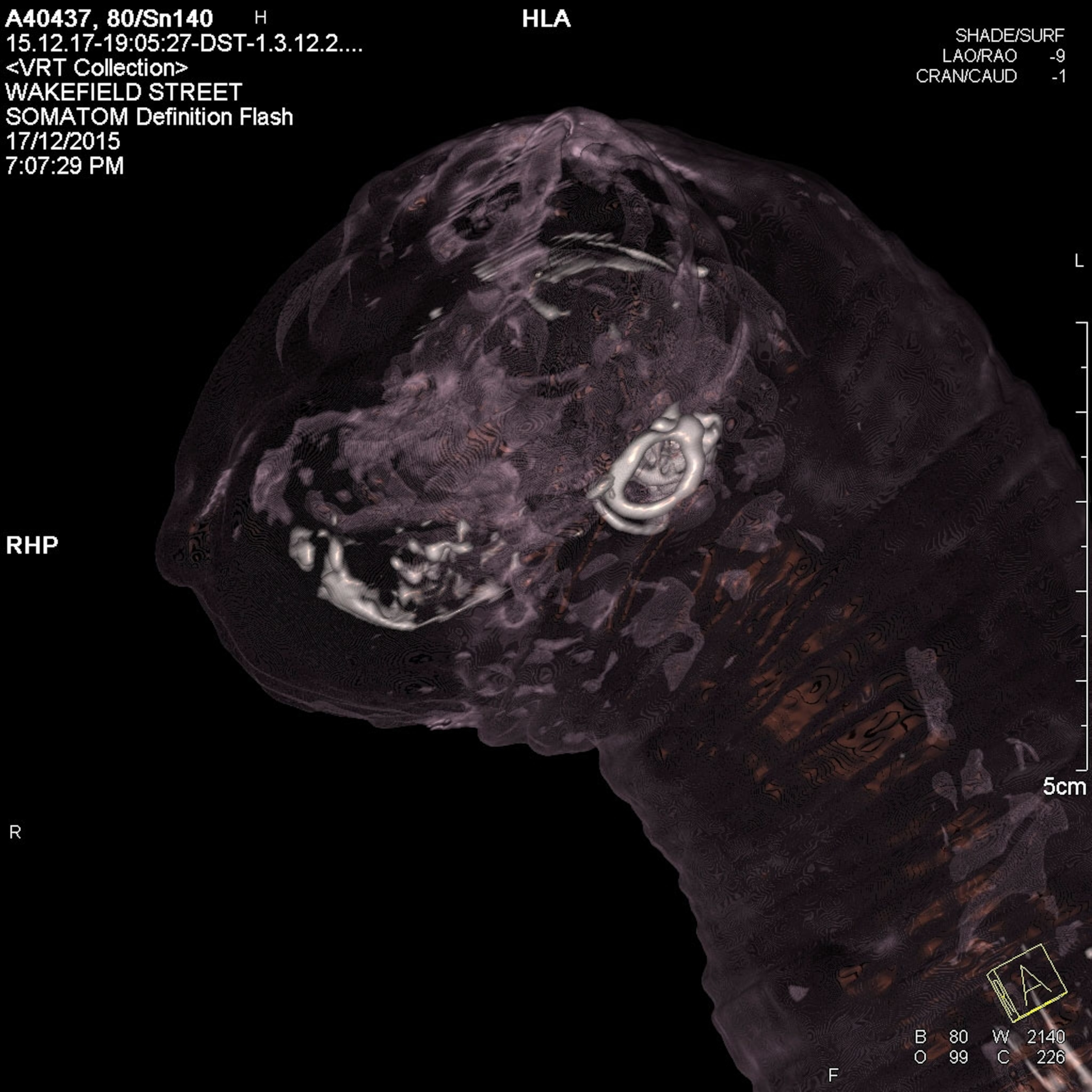
Peek Inside Cat Mummies With New X-ray Images
Turns out there's more than one way to scan a cat.
Archaeologists may soon unravel the mysteries of ancient Egypt using a new imaging technique that offers a better look inside mummies without removing a single piece of wrapping.
The new kind of CT scan has been successfully tested on cat mummies from the collections of the South Australian Museum. While the exact ages of these mummies are unknown, feline mummies were fairly common in Egypt from about 600 B.C. until A.D. 250.
Typical CT scans use a single type of x-ray to take images of an object from multiple angles and then create a digital image of the insides. Such scans can tell the difference between muscle and bone based on their relative density. But this can present challenges for mummies: As they get older, their skin and muscles dry up and become denser, while the bones lose marrow and become less dense.
The new technique, known as atomic number imaging, instead uses two kinds of x-rays to peer inside stuff and figure out the hidden composition based on a material’s atomic number—one of the defining characteristics of a chemical element. For instance, the scans can distinguish between bones filled with calcium and phosphorous and muscle, which is mostly carbon.
“It’s a technique that can be done on any CT scanner,” says lead author James Bewes, a radiology resident at the Royal Adelaide Hospital in Australia, who describes the work in the August issue of the Journal of Archaeological Science.
“We can dive that little bit deeper into the makeup of what we’re imaging,” Bewes says. “We’re trying to tell how they lived and how they died through their bones and through their muscles.”
Biblical Quest
The South Australian Museum doesn't know exactly where the cat mummies they provided for the study came from. But co-author Barry Craig, senior curator of foreign ethnology at the museum, says they may have arrived in the late 19th or early 20th century, around the time Reverend Roby Fletcher was sent abroad by the townspeople of Adelaide to gather evidence to support the Old Testament of the Bible.
“He ended up collecting a bunch of Egyptian relics instead,” Craig says, adding that a third cat mummy in the museum collections was certainly obtained by Fletcher around 1890 at Speos Artemidos, a temple site along the Nile River and one of the prime locations for ancient cat mummies.
Cats—usually semi-domesticated but occasionally wild species like swamp cats—were often sacrificed as votive offerings to the feline goddess Bastet to improve people’s relationships with the deity. Ancient Egyptians likely got them at so-called catteries, where they could choose different kinds of ornamental wrapping and give instructions on accompanying prayers, says Salima Ikram, a distinguished professor and head of Egyptology at the American University in Cairo.
The business was so lucrative that some supposed cat mummies are nothing more than ancient sacks of stones.
“We wanted to confirm that we actually did have cats inside the cat mummies, and not just ancient Egyptian fakes,” Bewes says of the two samples they tested.
The atomic imaging technique revealed even more than that. It's unclear sometimes if the offered cats were dead before being brought in for mummification, or if they were killed just for that purpose, perhaps by having their necks snapped.
Bewes and Craig's scans show that these two cats did have broken necks. But the scans also teased out nearby fractures in the dried tissue, which mean the breaks likely happened after mummification, ruling out at least one possible cause of death for these animals.
“A lot of them have been shunted around for a hundred years before they settled in the current museums,” Bewes says of the cat mummies, adding that they may have been banged around a lot in the process.
Unraveling History
In future scans, the new imaging method could also better distinguish cases in which mummies met a violent end, as opposed to disease or other harder to detect causes of death. And as the study of toxicology advances, Ikram says, archaeologists may even be able to look at tissue composition to tell if a mummy had been poisoned.
In addition, Bewes says that atomic imaging could help tell the difference between tissue and embalming materials, as well as the materials used for amulets or jewelry. This could reveal all kinds of extra information about individual mummies, including social status and participation in regional trade, according to Ikram.

For Bewes, the cats are only the beginning. The museum also has two human mummies, at least one of which is a Nubian male from around 300 B.C. brought in by a surgeon after World War I. The story goes that the mummy ended up as a kind of mascot for a military unit, but at one point a soldier in a tent was frightened by the shadow of a human figure at night and stabbed the mummy with a bayonet.
The mummy does have a hole that could have been bayonet inflicted, and the new technique may be able to verify how much damage this caused, aside from seeing what else is under the specimen’s wraps.
“We think that there are certain advantages with atomic number imaging,” Bewes says. “We hope that this will become the standard.”
Ikram agrees, saying that while more traditional scans can show a fair amount of differences between muscle and bone, this refinement is a step in the right direction. “The better this is, the less and less justification there is for unwrapping, unraveling, or damaging a mummy.”
Follow Joshua Rapp Learn on Twitter.








